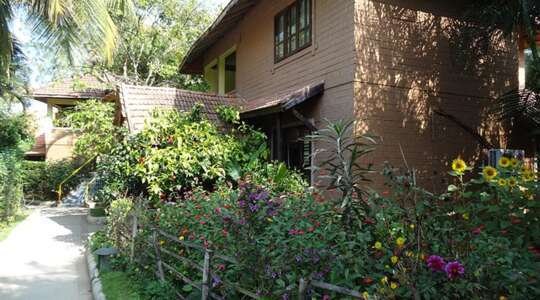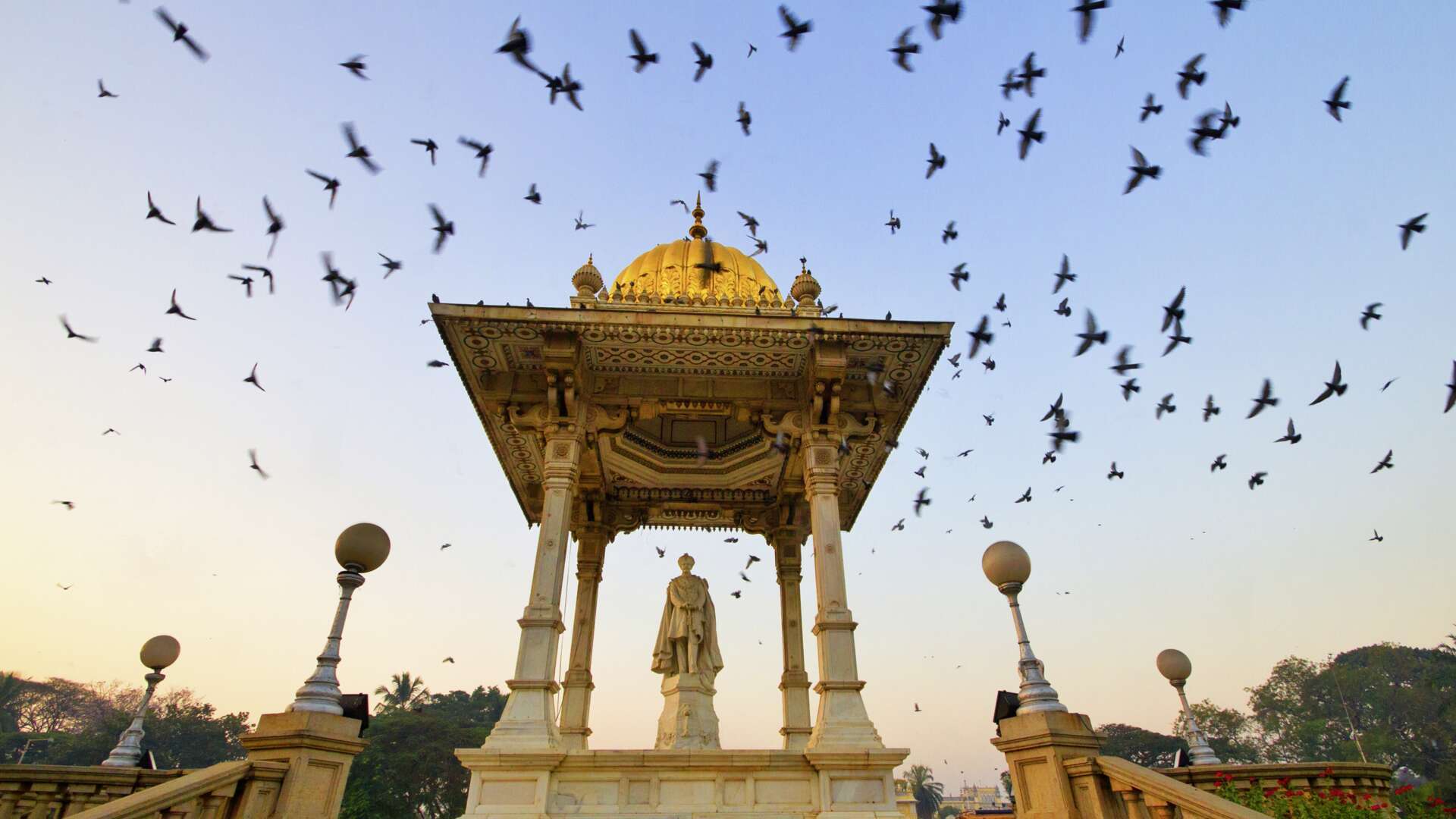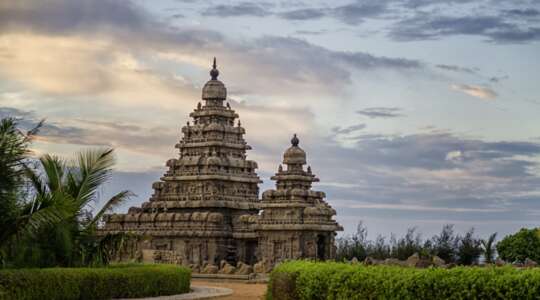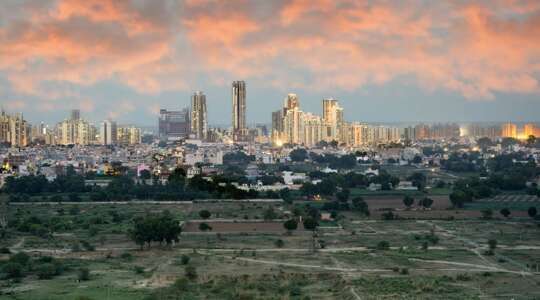Speak to one of our experts now about this offer
Call us on - 0800 092 4444
Or drop into your local Kuoni store to find out more
Speak to one of our experts now about this offer
Call us on - 0800 294 9710
Or drop into your local Kuoni store to find out more
Speak to one of our experts now about this offer
Call us on - 0800 294 9728
Or drop into your local Kuoni store to find out more
Bangalore & Karnataka Holidays
Formerly known as the ‘Garden City’ due to its number of parks and green spaces, India’s fastest-growing city of Bangalore (Bengaluru) has more recently been dubbed ‘Silicon City’ due to its thriving information technology industry. Karnataka’s state capital is a cosmopolitan metropolis with a year-long mild climate, bustling bar and café culture, elegant palaces, serene temples and 240-acre botanical gardens. The city also makes an ideal base for exploration of the temple city of Mysore which is a three-hour drive away.
Bangalore & Karnataka Hotels
Our recommendations for the best places to stay in Bangalore & Karnataka
Holidays in Bangalore & Karnataka

- Bangalore & Karnataka
Evolve Back, Coorg: coffee and spice and all things nice.

- Bangalore & Karnataka
- 5 Star
An opulent hotel inspired by an Indian landmark, nestled in a luxurious oasis of verdant gardens

- Bangalore & Karnataka
Colonial charm in a sprawling city garden at Taj West End.

- Bangalore & Karnataka
Just a few kilometres from the ancient city of Hampi, Evolve Back has created a wonderful, serene setting of lavish suites, against a backdrop of lush greenery.

- Bangalore & Karnataka
Hoysala Village Resort is a rural retreat at Hassan in the heart of Karnataka.
You may also like
In the Footsteps of Rajas & Sultans
When people think of Bangalore, they often think of the modern city it is now, however a walking tour will reveal its fascinating history. In the Footsteps of Rajas and Sultans covers the evolution of Bangalore from when it was founded in medieval times to its capture by the British, a fascinating period of time. Explore the crowded bazaars, stopping at interesting sites including the market and an ancient temple. Along the way, your guide will share some intriguing stories about Bangalore.
When people think of Bangalore, they often think of the modern city it is now, however a walking tour will reveal its fascinating history. In the Footsteps of Rajas and Sultans covers the evolution of Bangalore from when it was founded in medieval times to its capture by the British, a fascinating period of time.
The original city started off in 1537 as a mud fort, with a moat around it and a fortified settlement, or pettah, to the north which had different areas for people of a particular location, so there’d be districts of goldsmiths, traders and rice millers. You will weave south along labyrinthine streets that were formed in the 1500s. Explore the crowded bazaars, stopping at interesting sites including the market and an ancient temple. Along the way, your guide will share some intriguing stories about Bangalore.
The two-and-a-half-kilometre walk ends at what’s left of the stone fort built in the 18th century, which was damaged during the British siege of 1791 and later almost completely demolished. All that’s left is one massive gateway, which is a fitting spot to end because it marks the beginning of a new period in Bangalore’s history: the days of the Raj.
SoBa Walk
You’ll see a side of Bangalore that many people don’t even know exists on the SoBa walk. South Bangalore still holds on to its old-school way of life and this guided walk will take you to the temple where you can soak up the sounds and sights as people pay their respects. Wander through the market to enjoy the fresh smell of the flowers and vegetables as you watch the locals busy buying. Along the way, your guide may introduce you to some of the residents.
You’ll see a side of Bangalore that many people don’t even know exists on the SoBa walk. When you look at the city, it has four cities within it that tell you its whole story. The oldest part is right in the centre, then there is the colonial part that the British built. Modern high-tech Bangalore is another part of the city, but this tour focusses on South Bangalore – or SoBa as it is known.
South Bangalore still holds on to its old-school way of life and this guided walk will take you to the temple where you can soak up the sounds and sights as people pay their respects. Wander through the market to enjoy the fresh smell of the flowers and vegetables as you watch the locals busy buying. Along the way, your guide may introduce you to some of the residents.
Admire the beautiful traditional houses built in the 1940s and 1950s, little grocery shops where the customers still bargain for what they want and men and women dressed in traditional attire. Beyond the sights, your guide will also explain about the local culture and the history of the local language, Kannada. This tour provides guests with an authentic sense of what it means to be a Bangalorean, of the relaxed rhythm of every day and of a way of life that’s fast vanishing. SoBa is not modern Bangalore it’s a little time capsule.
Vineyard Visit & Lunch with Local Wine Aficionados
People are often surprised to discover that wine is made in India so a visit to a vineyard on the outskirts of Bangalore is well-worth it. The winery is in a peaceful and beautiful setting at the foot of the Nandi Hills, where Tipu Sultan once had his summer retreat. As you walk around the different parts of the winery, your guide will explain the processes involved in creating a finished bottle of red, white, rosé and sparkling wine.
People are often surprised to discover that wine is made in India so a visit to a vineyard on the outskirts of Bangalore is well-worth it. Kanwal Grover ‘the father of Indian viticulture’ and Georges Vesselle planted the first French varieties of grapes here in 1988, experimenting to see which of 33 different types would work best in the climate and soil.
The winery is in a peaceful and beautiful setting at the foot of the Nandi Hills, where Tipu Sultan once had his summer retreat. The sight of rows of vines stretching away into the distance is magical. Some visitors appreciate the scenery as much as the New World wines.
As you walk around the different parts of the winery, your guide will explain the processes involved in creating a finished bottle of red, white, rosé and sparkling wine. You will go on a journey from sorting and crushing the grapes to labelling and packaging. In the barrel room you can see where some of the more expensive wines are aged in oak barrels. Finally, under the guidance of a professional sommelier, you will get to taste some of the wines you’ve learned about.
Full Day Excursion to Belur & Halebid Temples
Belur and Halebidu’s soapstone temples were built by the Hoysala dynasty who ruled the southern part of India from around 1006 to 1346. They built almost 1500 temples in 950 locations out of which only 80 temples survive today due to various invasions. These are beautiful pieces of architecture and unique in so many ways.
Belur and Halebidu’s soapstone temples were built by the Hoysala dynasty who ruled the southern part of India from around 1006 to 1346. They built almost 1500 temples in 950 locations out of which only 80 temples survive today due to various invasions. These are beautiful pieces of architecture and unique in so many ways.
Belur was the first capital of Hoysala before they shifted it to Dorasamudra now famously known as Halebidu. At Belur, the main attraction is the 1st-century Chennakeshava Temple – chena meaning ‘beautiful’ and keshava being one of the 24 forms of Vishnu. It took almost 103 years to complete over three generations.
Most of the Hoysala temples are cleverly designed with a star-shaped platform called jagati at the base. Some of the most intricate artwork of the era is displayed on the outside of the temple including 38 madanikas (female sculptures) fixed at the end of the pillars. Over the years the weather has hardened the soapstone which gives the exterior a smooth, shiny glean. Inside you’ll see the sculptors’ remarkable work down to the finest detail around the navaranga hall with 48 pillars, most of which are carved by lathe. No two pillars are the same and you won’t find any stone left unfinished. You may even see the sculptors’ signatures which was rare because the kings never really credited the artisans.
After a spot of lunch (own expense) travel to Halebidu temple around a 25-minute drive away. Otherwise known as Hoysaleswara, this twin temple dedicated to Shiva was built around five years after Belur. Here you’ll find two huge monolithic bulls as well as very striking and varied artwork of processions, deities and animated stories – all minute carvings. All of this history is embedded into the walls as there were no written scriptures.
Sorry, your hotel is no longer available
Please check alternatives
-
{{item.body}}
-
{{item.body}}
Choose a departure date
{{store.searchDuration}} nights
Enter rooms & guests
Checking prices & availability

{{term}}, {{formattedDate}} for {{searchDuration}} nights









_w=126_h=31.png?v=d272c1958c6b4383fe76ca13ac1f42e2d91606e9)
_w=24_h=25.png?v=d272c1958c6b4383fe76ca13ac1f42e2d91606e9)
_w=24_h=25.png?v=d272c1958c6b4383fe76ca13ac1f42e2d91606e9)
_w=24_h=25.png?v=d272c1958c6b4383fe76ca13ac1f42e2d91606e9)